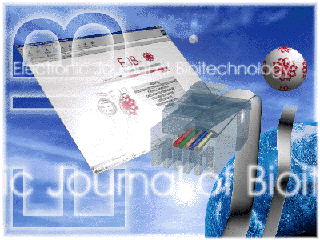Abstract
Bananas and plantains (Musa spp.) are the most important tropical fruit crops. They form an integral component of the farming systems in the humid agroecological zones of the tropics. A broad array of applied cell and molecular techniques are increasingly being used worldwide to facilitate and enhance the handling and improvement of plantain and banana germplasm. Tissue culture is used for germplasm exchange, conservation and rapid multiplication, while in vitro seed germination (based on embryo culture or rescue) plays a critical role in generating hybrid plants. DNA marker systems have been developed in Musa to assist germplasm management, selection within the breeding pool or gene introgression from wild species, and for disease diagnosis. Likewise, genetic transformation using the particle gun method or through Agrobacterium co-cultivation shows potential for the genetic betterment of the crop. This article discusses the applications of biotechnology for the genetic enhancement of banana and plantain. It highlights current advances by research teams across the world and reviews progress in molecular breeding of Musa by the International Institute of Tropical Agriculture and its collaborators.
Upon acceptance of an article by the journal, authors will be asked to transfer the copyright to Electronic Journal of Biotechnology, which is committed to maintain the electronic access to the journal and to administer a policy of fair control and ensure the widest possible dissemination of the information. The author can use the article for academic purposes, stating clearly the following: "Published in Electronic Journal of Biotechnology at DOI:10.2225/volXX-issueX-fulltext-XX".
The Copyright Transfer Agreement must be submitted as a signed scanned copy to biotec@ucv.cl. All authors must send a copy of this document.
